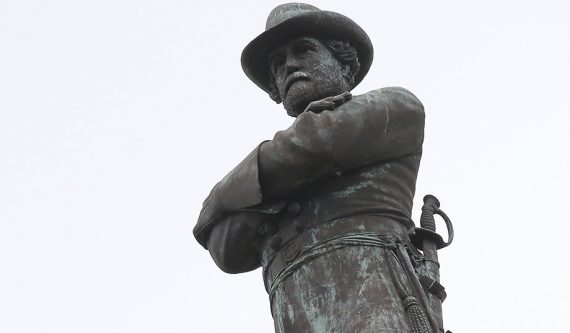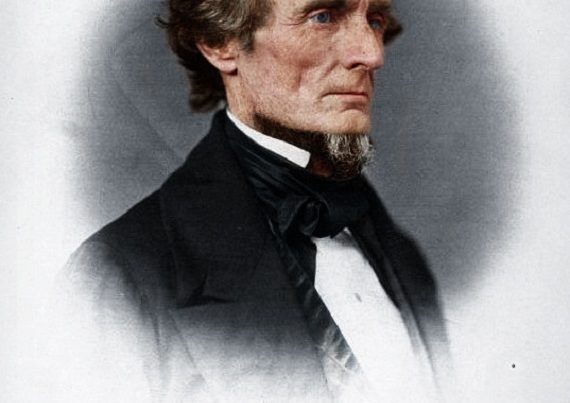For most of our nation’s two and a half century history, newspapers were the essential source of public opinion. Although newspapers expressed political preferences, regional newspapers did provide other sides of stories, as well as a variety of editorial opinions. But as the 1950s drew to a close, the public began getting its news from a few television networks. Reporters presenting the news in front of TV cameras in this newfangled medium achieved a certain celebrityhood with the viewing audience.
TV news personalities developed such an inflated sense of their own importance that they decided they knew what was best for our country. News began to be reported in the way that served their opinions and agendas, and their depictions of the South were not favorable. This also became the case with Hollywood and other parts of the entertainment field. In earlier years, Hollywood’s portrayals of the South were often favorable, even romanticized. But in the late 1950s, Hollywood got caught up in the “social change” trend that was griping elites. Films became politicized and characterizations of the Southern region were no longer complimentary.
Over the decades since then, national media’s agenda-driven news coverage has become more slanted, more embroidered, and now, often outright fraudulent. Only elites find the news trustworthy while it is steadily losing its credibility with the public. In fact, there is a vast division of opinions in America, and people are choosing sides in what can be described as “Elites versus Deplorables”,with the South belonging to the latter group.
Although journalists are not trained historians, they strongly believe their interpretations of history should not be questioned. When they give their versions of the past, they often caption their columns as “ The True History of …” . Unfortunately, in this “Wikipedia Generation” many think a few catch words can provide the correct, simple, and unerring explanation of a historical period. Consequently, partisan media types have had considerable success in disparaging all things Southern, including historic Confederate memorabilia, although their harsh criticisms of Confederate monuments don’t always hold up under scrutiny. I was reminded of their mindset as I read a newspaper editorial demanding that Roy Moore discontinue his Alabama Senate campaign.
Although similar to the expected attacks on Judge Moore from Left-leaning national media outlets, this editorial was from a newspaper in the Judge’s home state of Alabama. – The Tuscaloosa News. – It was one of those columns you had to read a second time to make sure you read it correctly the first time. The following quote gives you the gist of the editorial : “Even if the allegations that Moore had sexual contact with underage girls some 40 years ago are nothing more than trumped-up charges fueled by dirty politics, he should put the interests of the state ahead of his own and step aside.”
Yes, you read that correctly, and you can see why it brings to mind those who are behind the demolition of memorials for Robert E. Lee and other Confederates. There is a guileless segment of the public who rarely analyzes accusations made by establishment elites. And if accusations are repeated over and over, many will consider them as bona fide.
One Democratic congresswoman from Wisconsin publicly claimed that if seventy year-old Judge Moore is elected, teenage Senate pages would need special protection. But NBC television personality Megyn Kelly went even further. In an interview with an Alabama pastor, a supporter of Roy Moore, Kelly asked: “Aren’t you worried at all about the teenage girls in the D.C. area if it is true?”. Ms. Kelly seriously maintains that if the Alabama judge is elected to the Senate, teenage girls throughout the District of Columbia will be endangered.
These claims of sexual “assault” on young girls by Roy Moore curiously stopped abruptly when he lost the election. Likewise, the “elites”condemnation of Southern historical memorials will not cease until every monument is eliminated or the “deplorables” mount an aggressive backlash against the removals.
These memorials are often disparagingly called “Jim Crow era” monuments , insinuating they were erected only to intimidate blacks, and keep them subordinate to whites. But we must remember that the so-called Jim Crow era lasted roughly a century, from the end of Reconstruction to the Civil Rights movement (Second Reconstruction). During all those years, numerous monuments honoring Civil War heroes were erected in both the North and the South. Those honoring Confederate heroes have become vilified while those honoring Union heroes have not.
The national media only permits their interpretation of history. This typical quote is from the Left-leaning Salon Magazine: “It seems overly obviously to say this out loud, but men like Lee, Stonewall Jackson and Beauregard were willing traitors against the republic — officers who took up arms against the United States after an illegal act of secession. And they did so in the name of preserving slavery, the backbone of the Southern economy built upon the subjugation of men and women who were considered subhuman at that time.”
There is a reluctance among those currently in power to say anything commendable about the South’s history. We never hear comments like these made by the late President John F. Kennedy: “… the South is the land of Washington, who made our Nation – of Jefferson, who shaped its direction – and of Robert E. Lee who, after gallant failure, urged those who had followed him in bravery to reunite America in purpose and courage.”
While the federal establishment is too squeamish to speak out against the destruction of historical monuments, individual states are taking action. In several Southern states laws have been enacted to create historical preservation commissions and to protect historical memorials located on public property. These laws were needed because monuments were being rashly eliminated with little or no resistance. Ultimately a reaction set in. In the last few years, at least 30 new Confederate monuments have been constructed on strategically located private property that accommodate public viewing.
The city of Memphis thinks it has circumvented Tennessee’s monument preservation law by selling two parks containing Confederate monuments to a recently created nonprofit organization for only a fraction of the property’s market value. Bids were not put out for the sale of the property, persons funding the organization haven’t been named, and the organization is headed by a Memphis city council member. With the two parks no longer public property, monuments were removed after dark, without any advance notice to the public. Tennessee lawmakers are investigating the legality of this clandestine infringement of state law prior to making a recommendation for corrective action to the legislature. Surely, this patently obvious bypassing of state law will be overturned.
This may sound naive, but it appears that the long-awaited swing of the pendulum away from the starry-eyed 1960s is finally happening. We are hearing acknowledgments of the disastrous consequences of that decade of “love, peace, and brotherhood”. People are also taking another look at the much maligned decade of the 1950s, recognizing that only its negative aspects are reported, while its favorable features have been ignored. America has elected a President who publicly defends Confederate monuments, and the elites jaundiced view of the South seems to be losing its clout.







